DoCoMo Mobile Credit: Everything You Know About 3G is Useless
 WWJ has spotted the first presence of NTT DoCoMo’s ‘DCMX’ mobile credit (card) service on the streets of Tokyo and, once again, the future has arrived. Lawrence Cosh-Ishii, WWJ’s director of digital media, en route to a central Tokyo video shoot a few days ago, spied the first street-level advert for retail goods payable via DCMX (image at right).
WWJ has spotted the first presence of NTT DoCoMo’s ‘DCMX’ mobile credit (card) service on the streets of Tokyo and, once again, the future has arrived. Lawrence Cosh-Ishii, WWJ’s director of digital media, en route to a central Tokyo video shoot a few days ago, spied the first street-level advert for retail goods payable via DCMX (image at right).
Predictably, the pitch came from Girl’s Walker, Xavel’s icon of community-centric, user-recommended mobile shopping, which earned the company Pharaonic riches long before dusty old ‘blogs’ were ever invented. Girl’s Walker is touting a special fall line of fashionable goods that can be paid for via “DoCoMo credit,” which takes the form of a real credit payment for adults, or the purchase cost is added to the monthly phone bill, for cash-flush, under-age teens. Note no reference to any sort of ‘card’ – the service is the phone, and credit ‘cards’ are oh-so-1970s.
DCMX is shaping up to be the main pillar in DoCoMo’s consumer financial services strategy that will lock in mobilers and secure massive revenues long after 3G – and the mere delivery of mobile digital content – has become a low-margin sideline that markets elsewhere still can’t comprehend. DCMX isn’t merely the the ‘Next Big Thing’ – it’s everything; and it’s going to make 3G itself redundant (WWJ subscribers log in for full viewpoint and details on the DCMX mobile credit service).


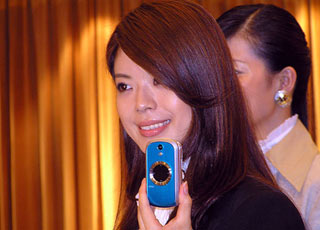 KDDI today launched the first strike in Japan’s mobile number portability wars with no less than
KDDI today launched the first strike in Japan’s mobile number portability wars with no less than 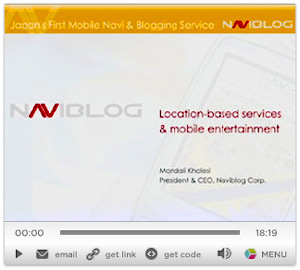
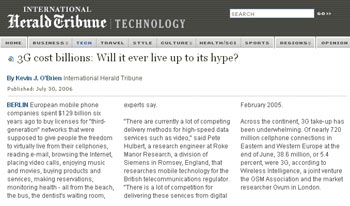 The International Herald Tribune ran a couple of gloomy 3G-related articles last week (see “3G cost billions: Will it ever live up to its hype?” and “Operators in Asia learn from mistakes”). It’s the height of the summer vacation slow-news cycle, and maybe the IHT was just fishing for some headline attention, but we couldn’t let these egregiously faulty items pass without comment.
The International Herald Tribune ran a couple of gloomy 3G-related articles last week (see “3G cost billions: Will it ever live up to its hype?” and “Operators in Asia learn from mistakes”). It’s the height of the summer vacation slow-news cycle, and maybe the IHT was just fishing for some headline attention, but we couldn’t let these egregiously faulty items pass without comment.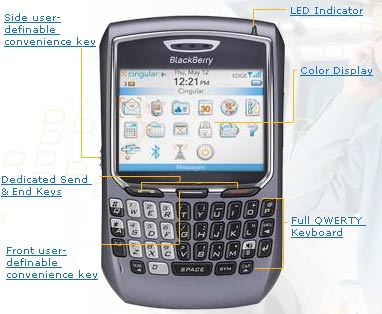 The pending Japan arrival of Research in Motion (RIM)’s hyperpopular BlackBerry email device, widely known as the ‘CrackBerry’ for its simple, efficient and addictive delivery of corporate email, will inject a new dimension into this country’s complex device and service matrix.
The pending Japan arrival of Research in Motion (RIM)’s hyperpopular BlackBerry email device, widely known as the ‘CrackBerry’ for its simple, efficient and addictive delivery of corporate email, will inject a new dimension into this country’s complex device and service matrix.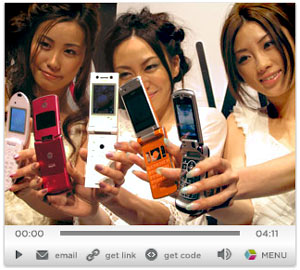 DoCoMo today announced six summer 3G handsets, including ‘7-Series’ models from US maker Motorola, Sharp, NEC, Panasonic and Mitsubishi. The Japan-made models include three ‘designer’ phones, with ultracool shapes and colours conceived by noted Japanese design personalities, while Motorola joins the show with their M702iS and M702iG — the latter evidently based on the newest version of the widely popular ‘RAZR’ series, the Razr V3X.
DoCoMo today announced six summer 3G handsets, including ‘7-Series’ models from US maker Motorola, Sharp, NEC, Panasonic and Mitsubishi. The Japan-made models include three ‘designer’ phones, with ultracool shapes and colours conceived by noted Japanese design personalities, while Motorola joins the show with their M702iS and M702iG — the latter evidently based on the newest version of the widely popular ‘RAZR’ series, the Razr V3X. Last Thursday, NTT DoCoMo announced they would deploy the super-popular BlackBerry email device, made by Canadian firm Research in Motion (RIM), in Japan, in autumn 2006. At first glance, the news is pretty interesting.
Last Thursday, NTT DoCoMo announced they would deploy the super-popular BlackBerry email device, made by Canadian firm Research in Motion (RIM), in Japan, in autumn 2006. At first glance, the news is pretty interesting.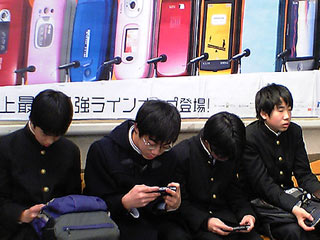 As mobile music settles into a steady mainstream
As mobile music settles into a steady mainstream 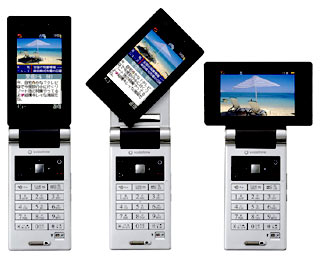
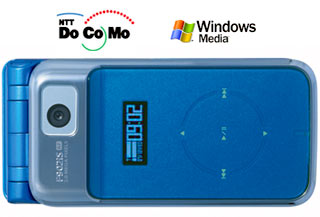 In a rare quadruple play, DoCoMo today issued three new handset announcements plus one new technology tie-up press release. The first handset news includes the long-expected new credit-card-enabled phones that will come bundled with the carrier’s ‘DCMX’ Java-and-IC-chip-based credit card. The new
In a rare quadruple play, DoCoMo today issued three new handset announcements plus one new technology tie-up press release. The first handset news includes the long-expected new credit-card-enabled phones that will come bundled with the carrier’s ‘DCMX’ Java-and-IC-chip-based credit card. The new